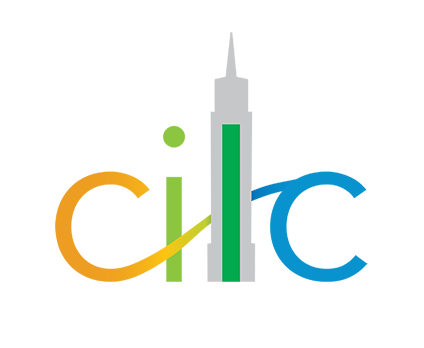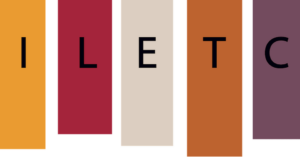Curriculum
“An educational sequence that creates connections among units of instruction (e.g., series of courses or thematic course segments) to enhance learning; takes into consideration learning objectives, content, assessment practices, and instructional approach.” (Paesani & Menke, 2023; p. 176)
Genre
“An oral or written rhetorical practice that structures culturally embedded communicative situations in a highly predictable pattern, thereby creating
horizons of expectations for its community of users.” (Swaffar & Arens, 2003, p. 99)
Goal-oriented social practices that have evolved in our culture to enable us to
get things done. (Adapted from Derewianka & Jones, 2016, p. 7).
To learn more, we recommend this video from Oregon State University:
Language-content learning
“Language learning through academic and cultural content. Language and content are seen as complementary, with the instructional focus shifting between the two depending on learning objectives, student needs, and so on to enhance the learning of both.” (Paesani & Menke, 2023, p. 179).
Literacies-oriented language education curriculum
A literacies-oriented curriculum targets the development of meaning-making abilities in which learners interact with texts in all modalities, in a way that is cognitively demanding and socio-culturally informed. Following this definition, genre-based, text-based, multiliteracies-based approaches, as well as virtual exchanges that follow the MIT Cultura model are inherently literacies-oriented pedagogical approaches used within a literacies-oriented curriculum.
Literacy
“The use of socially-, historically-, and culturally-situated practices of creating and interpreting meaning through texts. It entails at least a tacit awareness of the relationships between textual conventions and their contexts of use, and ideally, the ability to reflect critically on these relationships.” (Kern, 2000, p. 16)
Pedagogical approach (in second language learning)
The strategies, methods, and techniques used by the instructor in support of learner development. It reflects the practitioner’s assumptions and beliefs about how languages are learned.
Tasks
”Tasks are the quintessential communicative event in contemporary language teaching. […] Tasks involve the expression and interpretation of meaning. Tasks have a purpose that is not language practice.”(Van Patten, 2010; p. 79)
Text
“Any concrete, observable product that communicates meaning; can be written, audio, audiovisual, visual, digital, or multimodal.” (Paesani & Menke, 2023, p. 181).
Textual features
“The interrelated building blocks, or meaning-making resources, of target language texts that reflect a text creator’s thinking and decision-making; include language, conventions, and cultural content. Also called Available Designs in multiliteracies parlance.” (Paesani & Menke, 2023, p. 181).
Translingual and transcultural competence
“[T]ranslingual and transcultural competence, [… ], places value on the ability to operate between languages. Students are educated to function as informed and capable interlocutors with educated native speakers in the target language. They are also trained to reflect on the world and themselves through the lens of another language and culture. They learn to comprehend speakers of the target language as members of foreign societies and to grasp themselves as Americans—that is, as members of a society that is foreign to others. They also learn to relate to fellow members of their own society who speak languages other than English.” (MLA, 2007, para. 9)
Works Cited
Derewianka, B., & Jones, P. (2016). Teaching language in context. Oxford University Press.
Kern, R. (2000). Literacy and language teaching. Oxford University Press.
MLA Ad Hoc Committee on Foreign Languages. (2007). Foreign languages and higher education: New structures for a changed world. Retrieved from http://www.mla.org/pdf/forlang_news_pdf
Paesani, K., & Menke, M. (2023). Literacies in language education: A guide for teachers and teacher educators. Georgetown University Press. http://ebookcentral.proquest.com/lib/uaz/detail.action?docID=30226979
Swaffar, J. K., & Arens, K. M. (2005). Remapping the foreign language curriculum: An approach through multiple literacies. Modern Language Association.
Communicative language teaching
Building on Savignon’s (1997, p. 14), Bill VanPatten (2017) defines communicative classrooms as those that “involve the expression, interpretation, and negotiation of meaning with a purpose in the context of the classroom.” (p.12).
Literacy
Literacy “is the use of socially-, historically-, and culturally-situated practices of creating and interpreting meaning through texts. It entails at least a tacit awareness of the relationships between textual conventions and their contexts of use, and ideally, the ability to reflect critically on these relationships. Because it is purpose-sensitive, literacy is dynamic—not static—and variable across and within discourse communities and cultures. It draws on a wide range of cognitive abilities, on knowledge of written and spoken language, on knowledge of genres, and on cultural knowledge.” (Kern, 2000; p.16)
Language-content integration
“Language learning through academic or cultural content. Language and content are seen as complementary, with the instructional focus shifting between the two depending on learning objectives, student needs, and so on to enhance the learning of both.” (CARLA)
Literature
Literature encompasses “short and full- length works of fiction, poetry, and drama, regardless of a particular work’s popularity with readers or stature in the eyes of literary critics and scholars” (John S. Hedgcock and Dana R. Ferris; p. 244).
“A broad definition of literature is consistent with the understanding that literature is dynamic rather than static; not only do different literary texts have diverse characteristics, these characteristics are socioculturally dependent and thus variable across temporal and cultural contexts.” (Paesani, 2016; p.41)
Works Cited
Hedgcock, J.S., & Ferris, D.R. (2018). Teaching Readers of English: Students, Texts, and Contexts (2nd ed.). Routledge. https://doi.org/10.4324/9781315465579
Kern, R. G. (2003). Literacy and advanced foreign language learning: Rethinking the curriculum. In H. Byrnes & H. H. Maxim (Eds.), Advanced foreign language learning: A challenge to college programs (pp. 2-18). Heinle.
Paesani, K. (2016). Literature, Literacy, and the Undergraduate Foreign Language Curriculum. ADFL Bulletin, 44(1).
VanPatten, B. (2017). While We’re on the Topic: BVP on Language, Acquisition, and Classroom Practice. American Council on the Teaching of Foreign Languages. 1001 North Fairfax Street Suite 200, Alexandria, VA 22314.
Content-based language learning
“Content-based instruction (CBI) is a curricular approach that embeds language instruction in the context of meaningful content for learners (Brinton & Snow, 2017; Cammarata, 2016a; Met, 1999; Snow et al., 1989; Stoller, 2004). Because it offers a framework for creating cognitively engaging instructional materials that develop learners’ linguistic proficiency (Genesee & Lindholm-Leary, 2013), CBI is transforming L2 classrooms into a space where students use language to inquire about global issues that are most pressing to them, such as climate change.” (Turpin M. Kristen, 2022, pp. 57.)
Genre-based approach
Genre-based pedagogy (GBP) can be defined as “an approach to teaching that provides students with tools for understanding texts as genres, for analyzing those genres, and for using this insight in their writing” (Tardy, 2023, p. 24).
“A genre-based approach allows for the linking of content and language from the very beginning of the language learning trajectory, following a continuum of foci moving towards contextualized language teaching toward ‘language-conscious’ content teaching (Byrnes, Maxim, & Norris, 2010, p. 35).” (Michelson & Dupuy, 2014, p.26.)
Multiliteracies approach
“An instructional approach that applies the concept of foreign language literacies (see definition above) in classroom instruction; prioritizes meaningful communication around target language texts and the language forms used to express ideas within those texts. This infographic compares and disentangles key concepts from multiliteracies pedagogy and communicative language teaching.” ( CARLA)
Text-based approach
“Text-based instruction uses texts sourced directly from target-language discourse communities to teach learners how to read texts critically, recognize features in the texts, and create their own texts.
Text-based instruction is characterized by:
- Active learner discovery | Instructors guide learners to uncover the linguistic and sociolinguistic choices made by the creators of a text (instead of teaching learners “how it’s done”).
- A meaning-oriented departure point | The meaning of a text leads the entire teaching-learning cycle (instead of starting with grammar rules and discrete vocabulary).
- Scaffolded approach to development | Learning evolves through a series of steps crafted to support learning (instead of presenting a text “all at once”).
- Supporting the simultaneous development of linguistic, cognitive, and sociocultural competencies | The three areas required for a learner to develop into a critical multilingual speaker are explicitly engaged in each step (instead of teaching grammar and culture separately from each other, and with lower cognitive demands).”
(Alberta Gatti & Chiara Montera: Text based Repository https://textbasedtasks.commons.gc.cuny.edu/)
Virtual Exchanges/Telecollaboration
In language education, telecollaboration is described as “the application of online communication tools to bring together classes of language learners in geographically distant locations to develop their foreign language skills and intercultural competence through collaborative tasks and project-based work” (O’Dowd, 2011, p. 342).
Criteria for a literacies-oriented task
| 1. A fully contextualized text at the center of the task Does the text selected for the task have an audience beyond classroom learners and a purpose beyond language practice? Texts used for literacies-oriented tasks are relevant and meaningful to the discourse community that produces them. This purpose, which is embedded in their genre (e.g., advertisement, article, social media post) makes them relevant and meaningful to these communities and to learners, because they engage with those communities through the texts. |
| 2. Critical analysis Does the task encourage learners to critically analyze, question, and reflect? Learners are asked to critically analyze, question, and reflect on the text’s form and features, as well as on the perspectives, assumptions, and ideologies embedded in the selected text, moving beyond recognizing and recalling information. |
| 3. Interconnectedness of elements analyzed Does the task connect language, culture, and context? The task is designed to show how linguistic features, content, conventions, and sociocultural ideology (the dimensions of literacy) are interconnected in texts. |
| 4. Constructive component(s) Does the task invite learners to create, reimagine, or transform meaning? The task provides opportunities for learners to transform knowledge. |
Works Cited
Byrnes, H., Maxim, H. H., & Norris, J. M. (2010). Main text. The Modern Language Journal, 94, 1-202.
Gatti, A., & Montera, C. (n.d.). Text based Repository. CUNY Academic Commons. https://textbasedtasks.commons.gc.cuny.edu/
Michelson, K., & Dupuy, B. (2014). Multi-storied lives: Global simulation as an approach to developing multiliteracies in an intermediate French course. L2 Journal: An Open Access Refereed Journal for World Language Educators, 6(1).
O’Dowd, R. (2011) , “Intercultural Communicative Competence Through Telecollaboration”, in J. Jackson (Ed.), The Routledge Handbook of Language and Intercultural Communication (pp. 342-358). New York, NY:Routledge.
Tardy, C. (2023). Genre-based writing: What every ESL teacher needs to know. University of Michigan press.
Turpin, M. K. (2022). Education for sustainable development in foreign language learning. In M. J. de la Fuente (Ed.), Education for sustainable development in foreign language education. Routledge.

This entry is licensed under a Creative Commons Attribution-NonCommercial-ShareAlike 4.0 International license.




